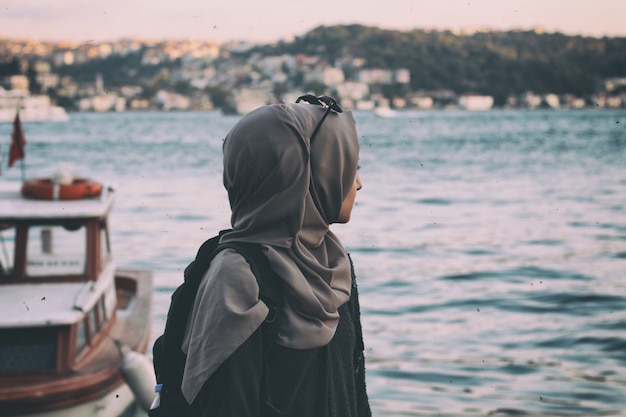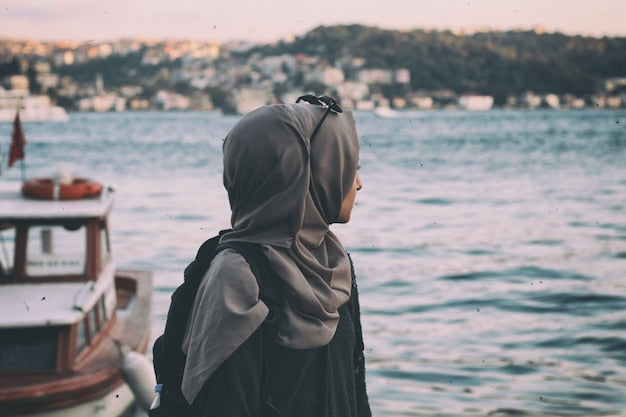
Modesty is an essential concept in Islam that encompasses all aspects of life, including clothing. Muslim women are expected to dress modestly to cover their bodies and avoid drawing attention to themselves.
Modest clothing not only adheres to Islamic guidelines but is also an expression of self-respect and dignity. This article will discuss the Do's and Don'ts of modest clothing in Islam and its significance in the Muslim community.
What Is Modest Clothing?
Modest clothing covers the body, exposing no part of the skin except the face, hands, and feet. The clothing should be loose-fitting and not cling to the body, as it is considered immodest.
Modest clothing aims to protect women from unwanted attention and to promote modesty, humility, and dignity.
Modesty in clothing is not only limited to women but also applies to men. Men are also expected to dress modestly, covering their bodies appropriately. However, the guidelines for men's clothing are not as strict as for women's clothing.
Rule Of Modest Clothing In Islam
The Islamic concept of modesty in clothing is based on the Quranic injunctions and the Hadith of Prophet Muhammad (PBUH). The Quran instructs Muslim women to dress modestly and cover their bodies.
It states, "And tell the believing women to lower their gaze and be modest, and to display of their adornment only that which is apparent, and to draw their veils over their bosoms." (24:31)
The Islamic guidelines for modest clothing are not limited to women's clothing but also include men's clothing. Men should dress modestly, covering their bodies appropriately and avoiding tight or revealing clothing.
Modesty is fundamental to Islamic teachings and extends to how Muslims dress. Modest clothing expresses respect, humility, and dignity and is essential to Muslim culture.
Muslim women, in particular, are expected to dress modestly and cover their bodies appropriately. This article will discuss the dos and Don'ts of modest clothing in Islam.
The Do's Of Modest Clothing In Islam
1. Wear Loose-Fitting Clothing:
Muslim women should wear loose-fitting clothing that does not cling to the body. Clothing should be modest and cover the body entirely. Loose-fitting clothing promotes comfort and modesty. The clothing should be long and cover the arms and legs. The clothing should not be too tight or revealing.
2. Cover The Head:
Muslim women should cover their heads with a hijab or a scarf. The hijab should cover the hair, neck, and ears. The head covering is an essential part of Islamic clothing and a symbol of modesty. You should wear the hijab in a way that does not attract attention to the woman's body.
3. Wear Long Sleeves:
Muslim women should wear long sleeves to cover their arms. The sleeves should extend to the wrist, and the clothing should not be see-through. Long sleeves provide additional coverage and promote modesty. Women can also wear shirts with three-quarter sleeves or sleeves reaching their elbows.
4. Wear Loose Pants Or Skirts:
Muslim women should wear loose pants or skirts that do not show the shape of their legs. Clothing that is too tight or revealing is not appropriate for Muslim women. Skirts should reach at least the ankles, and pants should be loose enough to allow movement without showing the body's shape.
5. Choose Modest Colors:
Muslim women should choose subtle colors for their clothing, such as black, brown, blue, and green. Bright and bold colors are not appropriate for Muslim women's clothing. Clothing should be simple and not draw attention to the wearer.
6. Dress According To The Occasion:
Muslim women should dress appropriately for the occasion. For example, if attending a formal event, women should wear formal clothing that covers their bodies appropriately. For casual occasions, women can wear comfortable and appropriate clothing for the setting.
7. Dress According To The Weather:
Muslim women should dress according to the weather. In the summer, lightweight clothing that provides coverage is appropriate. In the winter, warm and modest clothing is recommended. Clothing should be comfortable and allow for movement.
The Don'ts Of Modest Clothing In Islam
1. Do Not Wear Tight Clothing:
Muslim women should avoid wearing tight clothing that reveals the shape of their bodies. Clothing that is too tight is considered immodest and inappropriate. Clothing should be loose and not cling to the body.
2. Do Not Show Too Much Skin:
Muslim women should not show any part of their skin except their face, hands, and feet. Clothing that is too revealing or see-through is not appropriate for Muslim women. Women should wear clothing that covers their bodies appropriately.
3. Do Not Wear Transparent Clothing:
Muslim women should avoid wearing transparent clothing that shows the skin underneath. Transparent clothing is considered immodest and inappropriate. Clothing should be opaque and not reveal anything underneath.
4. Do Not Wear Clothing With Offensive Or Inappropriate Writing:
You should avoid clothing with offensive or inappropriate writing. Clothing should be respectful and not contain any inappropriate language or symbols. Muslim women should wear clothing that promotes modesty and dignity.
5. Avoid See-Through Clothing:
Muslim women should avoid wearing see-through clothing that reveals the body. Clothing should provide complete coverage to promote modesty. Wearing see-through clothing is not appropriate in Islamic culture as it goes against the principle of covering the body.
Conclusion:
In conclusion, modest clothing is an essential part of Islamic teachings. People expect Muslim women and men to dress modestly and cover their bodies appropriately.
Modest clothing expresses self-respect and dignity and promotes modesty, humility, and respect. Muslim women should follow the guidelines for modest clothing and avoid wearing clothing that is too revealing or inappropriate.
It is essential to understand the dos and Don'ts of modest clothing in Islam to promote modesty and respect in the Muslim community.
TL;DR: Modesty is an important aspect of Islamic teachings and extends to how Muslims dress. This blog post covers the do's and don'ts of modest clothing in Islam, including types of modest clothing and cultural/societal influences on dress.
References:
https://myislam.org/surah-nur/ayat-31/
https://curatedtaste.com/2022/12/the-dos-and-donts-of-dressing-modestly-in-islam.html
https://hijabisahibaa.wordpress.com/category/modest-fashion/dos-donts/

Share:
Top Tips When Learning The Quran
A Ramadan Outfit Guide For Women